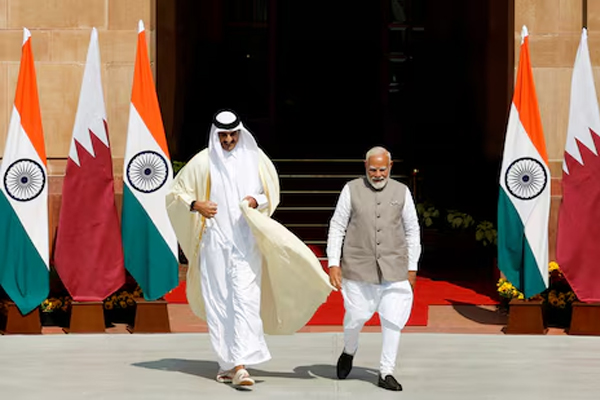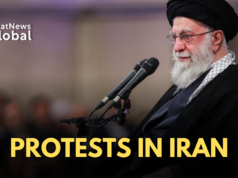
Groundwork for trade talks with Qatar, a key member of the Gulf Cooperation Council (GCC), has been laid, and negotiations are expected to commence soon. Officials said the discussions aim to establish a comprehensive framework for reducing trade barriers and enhancing bilateral economic cooperation across sectors.
This initiative follows increasing interest among GCC countries to establish bilateral trade agreements with India, bypassing the slower-paced regional negotiations.
Qatar, with its substantial sovereign wealth, energy reserves, and rising interest in global investment, could be a key partner for India, especially in sectors like energy, LNG supply security, infrastructure, services, and sovereign fund partnerships.
Oman FTA
India and Oman have concluded negotiations for a Comprehensive Economic Partnership Agreement (CEPA), and officials on both sides indicate that the deal is now in its final “administrative” phase. A formal signing is expected in the next few weeks.
A significant breakthrough in the deal came when both countries agreed on India’s demand for safeguards from frequent revisions under Oman’s labour localisation policy, known as “Omanisation.” The policy mandates companies to employ a certain percentage of local workers, a rule that has often changed, creating uncertainty for Indian businesses operating in the country.
India has successfully negotiated for the current Omanisation thresholds to be frozen for Indian companies, allowing for more predictable operating conditions. This provision is expected to ensure smoother mobility of professionals, a key element of the CEPA, and to safeguard future Indian investments in the Omani market.
FTA Scope
The India-Oman CEPA is expected to offer India access to over 98% of its goods exports, and also deeper cooperation in services and investment flows. This agreement goes beyond the India-UAE CEPA signed in 2022 in terms of liberalisation, signalling a shift toward more ambitious trade partnerships in the region.
Oman currently applies tariffs ranging from 0% to 100%, with steeper duties on sensitive items like meat, alcohol, and tobacco. For India, the CEPA could significantly reduce tariffs on labour-intensive exports such as textiles, leather goods, and engineering products, segments already reeling under steeper tariffs from the United States.
India’s exports to Oman reached $4.07 billion in FY25, while imports surged to $6.55 billion, mainly driven by petroleum products and fertilisers, leading to a trade deficit of $2.48 billion. The CEPA could help re-balance trade while opening new opportunities in sectors like pharmaceuticals, chemicals, digital services, and food processing.
Why the Gulf Matters
India’s expanding trade ties with the Gulf come at a critical time. Following steep tariff hikes by the US on several Chinese and Asian imports, including select Indian goods, New Delhi has intensified efforts to secure alternate markets. The Gulf region, with its high per capita income, strategic location, and complementary economic interests, offers a natural alternative.
The CEPA with the UAE, signed in early 2022, has already demonstrated the benefits of such pacts. Bilateral trade between India and the UAE rose from $43.3 billion in FY21 to over $100 billion in FY25, with notable gains in sectors like gems and jewellery, which saw exports surge over 60% since the agreement took effect.
India now aims to replicate that success across other GCC nations. With the Oman deal nearing completion and Qatar talks imminent, Saudi Arabia remains a key pending partner. However, Riyadh has linked progress on the FTA to the conclusion of a Bilateral Investment Treaty, which India prefers to treat as a separate track. This could delay timelines but not necessarily the broader momentum toward a regional trade architecture.
Beyond Trade
The India-Oman dialogue has also extended into strategic domains. India has been granted access to a dedicated zone at Oman’s Duqm Port—offering logistical, commercial, and even naval docking capabilities. Discussions have also covered cooperation in satellite launches, renewable energy, and green hydrogen, underscoring the growing strategic convergence between the two nations.
Over 6,000 India-Oman joint ventures already operate in the Sultanate, with Indian investments particularly concentrated in industrial zones like Sohar and Salalah. Omani investments into India have also grown steadily, reaching over $600 million by March 2025.




